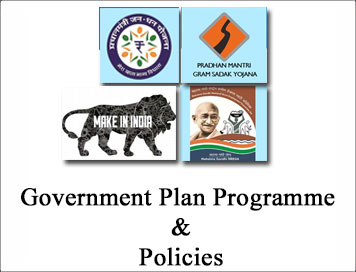(HOT) UPSC Current Affairs 2025 PDF
NEW! The Gist (NOV-2025) | E-BOOKS
DEFEXPO India-2016: Government Plan Programme Policies for UPSC Exam

Government Plan Programme Policies for UPSC Exam
:: DEFEXPO India-2016 ::
The new Defence Procurement Procedure 2016 (DPP 2016) gives strong support to ‘Make in India’ by according highest priority to Buy (Indian-IDDM) i.e. Indigenous Designed, Developed and Manufactured category. It focuses on enhancement and rationalization of indigenous content and has provisions for involving private industry as production agencies and technology transfer partners. The ‘Make’ Procedure has also been simplified with provisions for earmarking projects not exceeding development cost of Rs.10 crore (Government funded) and Rs.3 crore (industry funded) for MSMEs.
A number of measures have already been taken to achieve self-reliance in defence production by harnessing the capabilities of the public and private sector industry. The Defence Production Policy, aims at achieving substantive self-reliance in the design, development and production of equipment, weapon systems, platforms required for defence in as early a time frame possible; creating conditions conducive for the private industry to take an active role in this endeavour, enhancing potential of SMEs in indigenisation and broadening the defence R&D base of the country. Indigenous manufacturing of defence equipments is encouraged by the Government through several policy measures, which, inter-alia, include the following:
1. Preference to ‘Buy (Indian-IDDM)’, ‘Buy (Indian)’, ‘Buy and Make (Indian)’, categories of capital acquisition over ‘Buy (Global)’ category in Defence Procurement Procedure.
2. The revised ‘Make’ procedure to promote design and development has been promulgated. It provides for Government funding upto 90% and preferential treatment to MSMEs for certain categories of projects.
3. Foreign Direct Investment (FDI) Policy has been reviewed and as per revised policy notified in Nov 2015, Foreign Investment Cap upto 49% is allowed under automatic route and above 49% under Government route on case-to-case basis, wherever it is likely to result in access to modern and ‘state-of-art’ technology in the country.
4. Industrial licensing regime for Indian manufacturers has been liberalised and most of the components / parts / sub-systems have been taken out from the list of defence products requiring Industrial Licence. This has reduced entry barriers for new entrants in this sector, particularly small and medium enterprises.
5. Issues related to level-playing field between Indian vs. foreign manufacturers and public sector vs. private sector have also been addressed. These include Exchange Rate Variation (ERV) protection for Indian vendors, offset obligations in ‘Buy (Global)’ cases, Excise / Custom duties on defence equipments, etc.
6. Offset implementation process has been made flexible by allowing change of Indian Offset Partners (IOPs) and offset components, even in signed contracts. Foreign Original Equipment Manufacturers (OEMs) are now not required to indicate the details of IOPs and products at the time of signing of contracts. Services as an avenue of offset have been re-instated with certain conditionalities.

